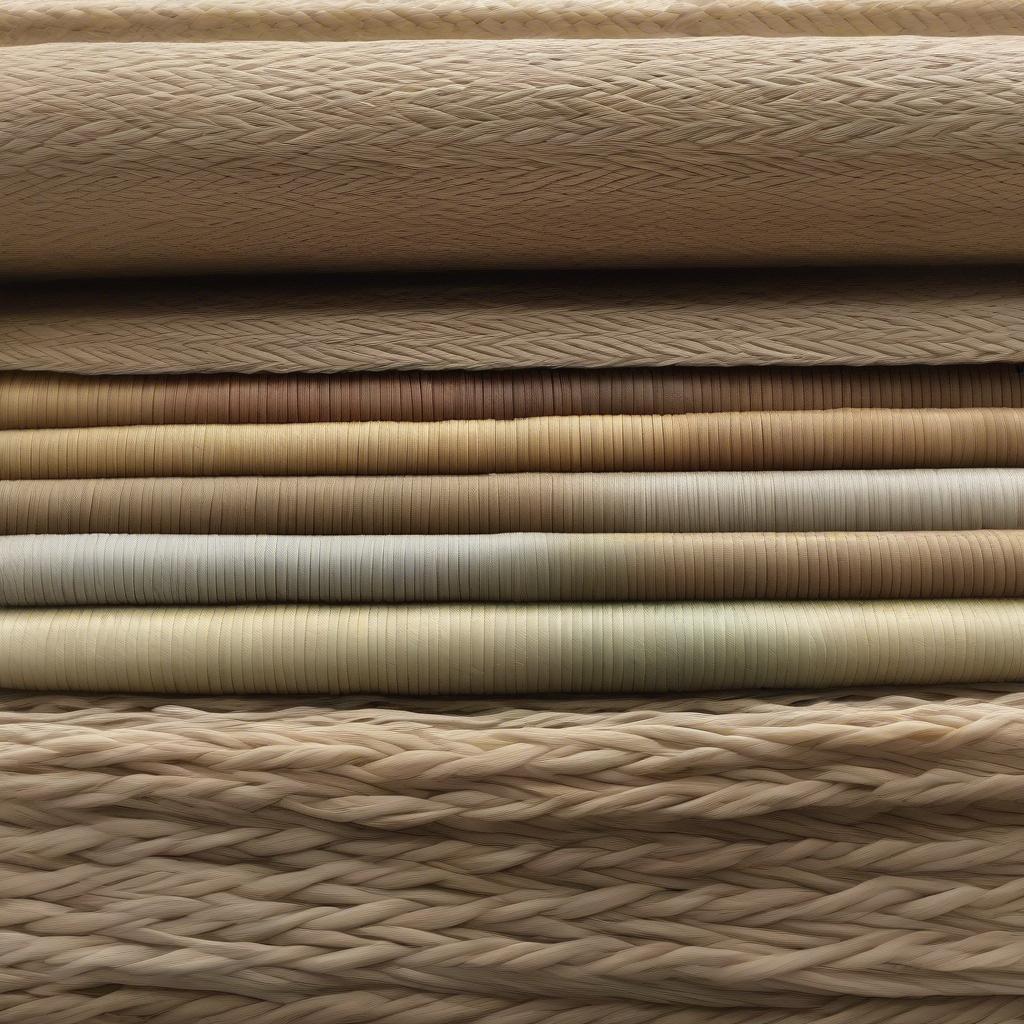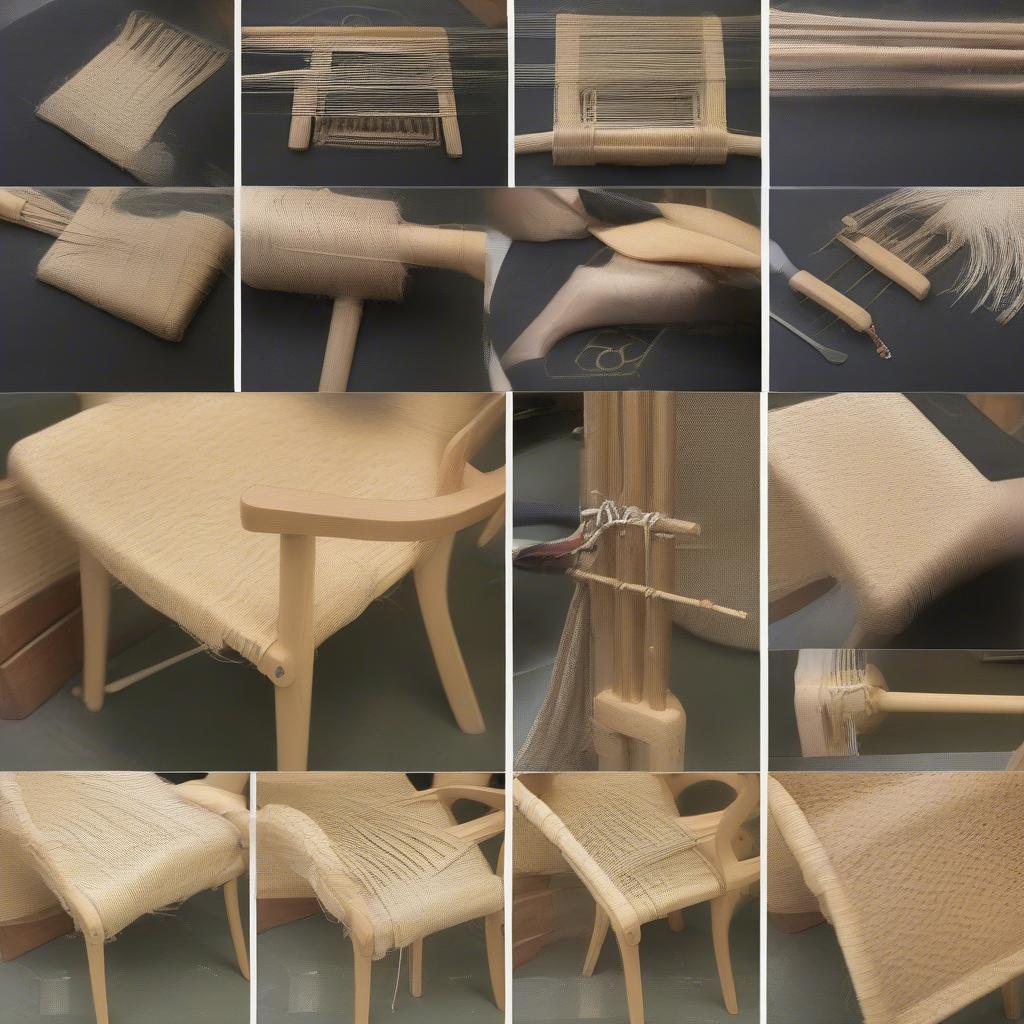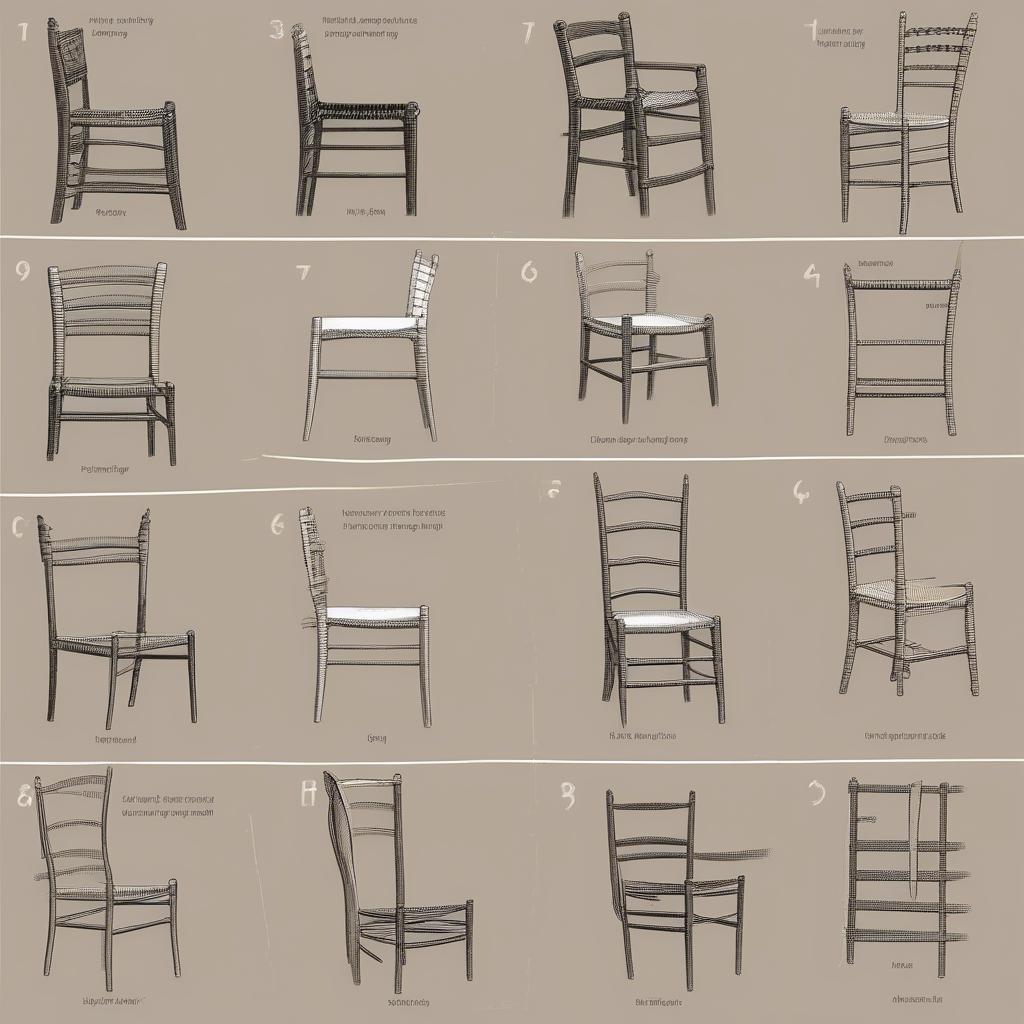Weave Chair
How to Weave Chair Seat and Back
Learning How To Weave Chair Seat And Back can transform a worn-out piece of furniture into a treasured possession. Whether you’re tackling a family heirloom or simply adding a personal touch to your decor, this rewarding craft allows you to blend traditional techniques with your own creative flair. This comprehensive guide will take you through the steps involved in weaving a chair seat and back, providing you with the knowledge and inspiration you need to get started.
Choosing Your Weaving Materials
The first step in how to weave chair seat and back is selecting the right materials. From natural fibers like rush, reed, and seagrass to more contemporary options like Danish cord and synthetic paper cord, the material you choose will impact both the aesthetic and durability of your finished piece. Natural materials offer a classic, organic look and feel, while synthetics provide increased resistance to wear and tear. Consider the style of your chair and the environment it will be in when making your selection. For example, a herringbone chair weave might be perfectly suited for a traditional dining chair.
For those living in Canada and looking for readily available supplies, checking out online stores or local craft suppliers might be a good starting point for your chair weaving supplies canada.
 Different Weaving Materials for Chair Seats and Backs
Different Weaving Materials for Chair Seats and Backs
Preparing Your Chair Frame
Before you begin weaving, ensure your chair frame is sturdy and free of any loose joints or damaged areas. A stable frame is crucial for a successful weave. Clean the frame thoroughly and, if necessary, apply a fresh coat of paint or varnish. This will not only enhance the final look but also protect the frame from further wear.
How to Weave a Chair Seat: Step-by-Step
The seat weaving process often involves creating a strong foundation using vertical and horizontal strands, then weaving the chosen material through this framework. Here’s a general overview:
- Warping the Frame: Create the vertical warp by running strands of your chosen material from front to back across the seat frame, securing them tightly at each end.
- Creating the Weft: Begin weaving the horizontal weft strands through the warp, following a chosen pattern. Popular patterns include the simple over-under weave, the herringbone weave, and the more complex Danish cord weave.
- Maintaining Tension: Consistent tension is key to a neat and durable weave. Ensure the strands are pulled snugly but not so tight that they distort the frame.
- Securing the Ends: Once the weaving is complete, carefully secure the ends of the material to the underside of the frame.
Perhaps you’re intrigued by the unique patterns found in a mexican string weave chair. Exploring different techniques can broaden your weaving horizons.
 Step-by-Step Chair Seat Weaving Process
Step-by-Step Chair Seat Weaving Process
Weaving the Chair Back: Techniques and Considerations
Chair backs often present unique design challenges, requiring adaptations to the basic weaving techniques. The shape and complexity of the back will dictate the appropriate method.
Ladder Back Weaving
This classic technique involves weaving vertical strands through horizontal rails, creating a ladder-like effect.
Figure-Eight Weaving
This intricate pattern produces a visually appealing and sturdy weave, perfect for chair backs with a more open design.
If you’re located in Raleigh, NC, and looking for professional guidance, seeking out a chair weaver raleigh nc could provide valuable local expertise.
 Various Chair Back Weaving Techniques
Various Chair Back Weaving Techniques
Troubleshooting and Tips for Success
- Dealing with Broken Strands: Don’t panic! Simply weave in a new strand and carefully secure the ends.
- Maintaining Even Tension: Practice makes perfect! With experience, you’ll develop a feel for the right tension.
- Choosing the Right Pattern: Consider the style of your chair and your skill level when selecting a weaving pattern.
Weaving an outdoor chair might require different materials and techniques. Our guide on how to weave an outdoor chair offers specific advice for this application.
Conclusion
Learning how to weave chair seat and back can be a fulfilling and creative endeavor. With patience and practice, you can transform old chairs into unique and beautiful pieces, adding a personal touch to your home while preserving the craft of traditional weaving.
FAQ
- What is the best material for weaving chair seats? The best material depends on the chair’s style and intended use. Natural fibers offer a traditional look, while synthetics are more durable.
- How long does it take to weave a chair seat? The time varies depending on the complexity of the pattern and the size of the chair, but it can range from a few hours to several days.
- What tools do I need for chair weaving? Basic tools include a sturdy needle, scissors, a measuring tape, and a mallet.
- Where can I find chair weaving supplies? Craft stores, online retailers, and specialized weaving suppliers offer a wide range of materials and tools.
- Can I repair a broken weave? Yes, you can often repair a broken weave by carefully weaving in a new strand to replace the damaged one.
- What are the most common chair weaving patterns? Popular patterns include the over-under weave, herringbone weave, and Danish cord weave.
- How do I maintain a woven chair seat? Regular dusting and occasional cleaning with a damp cloth will help maintain the beauty and longevity of your woven chair seat.
Common Chair Weaving Scenarios
- Replacing a damaged rush seat: This involves carefully removing the old rush and weaving in new material, matching the original pattern as closely as possible.
- Updating a chair with a new weave: This allows for creative expression, choosing a new material and pattern to give the chair a fresh look.
- Weaving a chair seat for the first time: Start with a simple pattern and gradually work your way up to more complex designs.
Further Exploration
For more in-depth information on specific weaving techniques or materials, consider exploring other resources on our website or consulting with experienced weavers.
Contact Us
For assistance with your chair weaving projects or any questions, please contact our 24/7 customer service team. You can reach us via hotline at +84 388 951 999, or visit our offices in Hanoi, Vietnam or Tech Avenue, Suite 12, San Francisco, CA 94105, USA.
